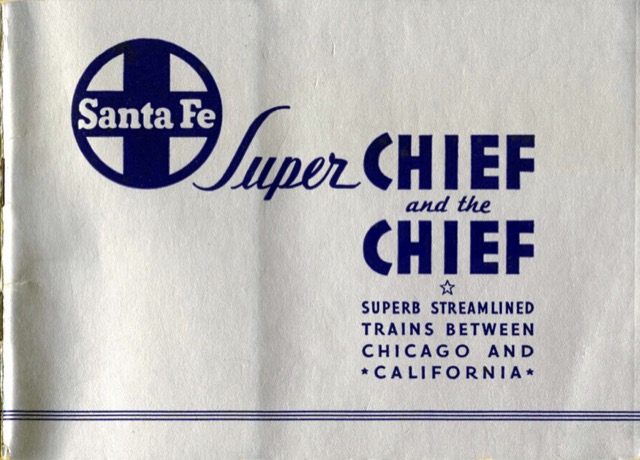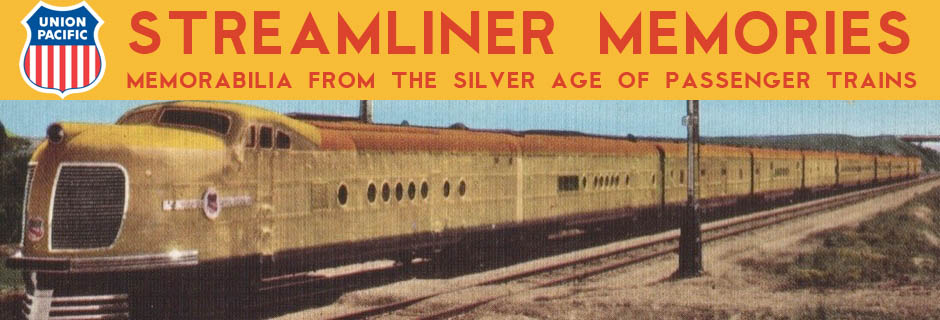If the PDF of this booklet looks repetitious, it is because most of the 6-1/4-inch-wide pages of color photos are interspersed with 2-1/2″-wide pages of text. Even more confusing is that most of the photos are oriented at 90 degrees to the text. The photos are nevertheless gorgeous and show just how luxurious streamlined trains could be.
 Click image to download a 6.9-MB PDF of this 32-page booklet.
Click image to download a 6.9-MB PDF of this 32-page booklet.
In 1941, the Super Chief was one of the fastest long-distance trains in the world, operating between Chicago and Los Angeles on its 39-3/4-hour schedule, for an average speed of 56 miles per hour including stops. But it only went twice a week, leaving Chicago Tuesdays and Saturdays and leaving Los Angeles Tuesdays and Fridays. It would not become a daily train until 1948.
The Chief was the only daily streamlined train between Chicago and Los Angeles, but was considerably slower, taking just over 50 hours. This would be reduced to 45 hours in 1945 and to 39-3/4 hours (39-1/2 hours westbound) in 1954, offering travelers three sub-40-hour departures each day: Super Chief, Chief, and El Capitan. Those were the days.
